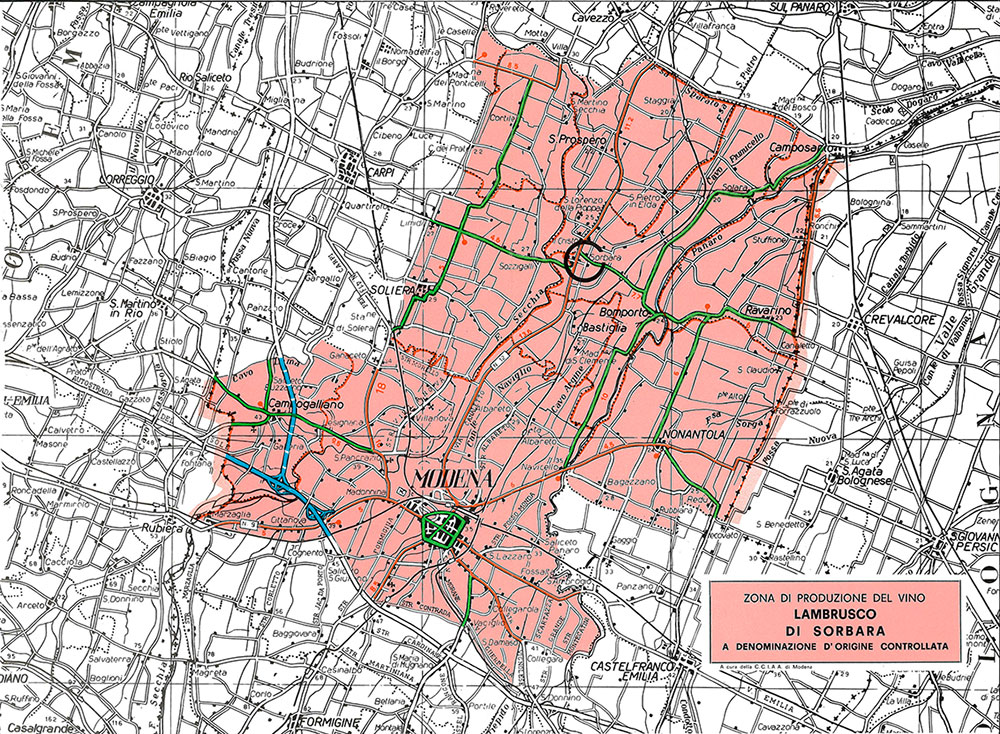Lambrusco di Sorbara DOP
A little history
“Lambrusco di Sorbara” has existed in the Modena area since 1800. This is evidenced by numerous historical documents, including the chemical/geological/therapeutic essay on the “Lambrusco di Sorbara” wine taken from the booklet by the Associazione Agraria Italiana (Italian Agricultural Association) under the direction of the Accademia di Torino, published in the Gazzetta di Modena in 1862, the descriptive catalogue of the main grape varieties grown in the provinces of Modena and Reggio Emilia published in 1867, and the analytical essay “I lambruschi di Sorbara e Salamino” (The Lambrusco varieties of Sorbara and Salamino) by Enrico Ramazzini in 1885. The controlled denomination of origin was created in 1970.
The area
The production area lies in the municipalities of Bastiglia, Bomporto, Nonantola, Ravarino and San Prospero, all in the province of Modena, and in part of the administrative area of the municipalities of Campogalliano, Camposanto, Carpi, Castelfranco Emilia, Modena, Soliera and San Cesario sul Panaro, all in the province of Modena. The plains where Lambrusco di Sorbara is cultivated have a distinctive characteristic: the so-called “Sant’Omobono” soil that originated from the flooding of the Secchia and Panaro rivers. The land here is predominantly loose, sandy, permeable and rich in potassium.
Wines and grape varieties
The specification includes the production of 4 types in both red and rosé, as well as spumante and sparkling versions. Among the various Lambrusco families used for this specification, Lambrusco di Sorbara is the main variety and must account for at least 60% of the wine, while Lambrusco Salamino can constitute up to a maximum of 40%, along with other Lambrusco varieties (maximum 15%). Lambrusco di Sorbara is a grape variety that is acinellato (the grapes have a diameter of just a few millimetres) due to a floral anomaly that causes a significant loss of product: this peculiarity makes it unique and particularly refined.

